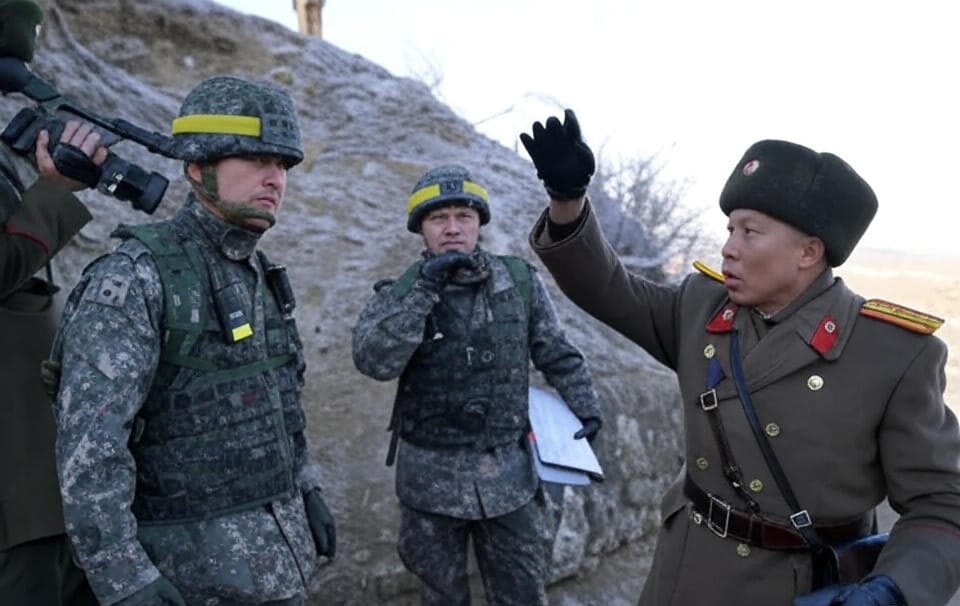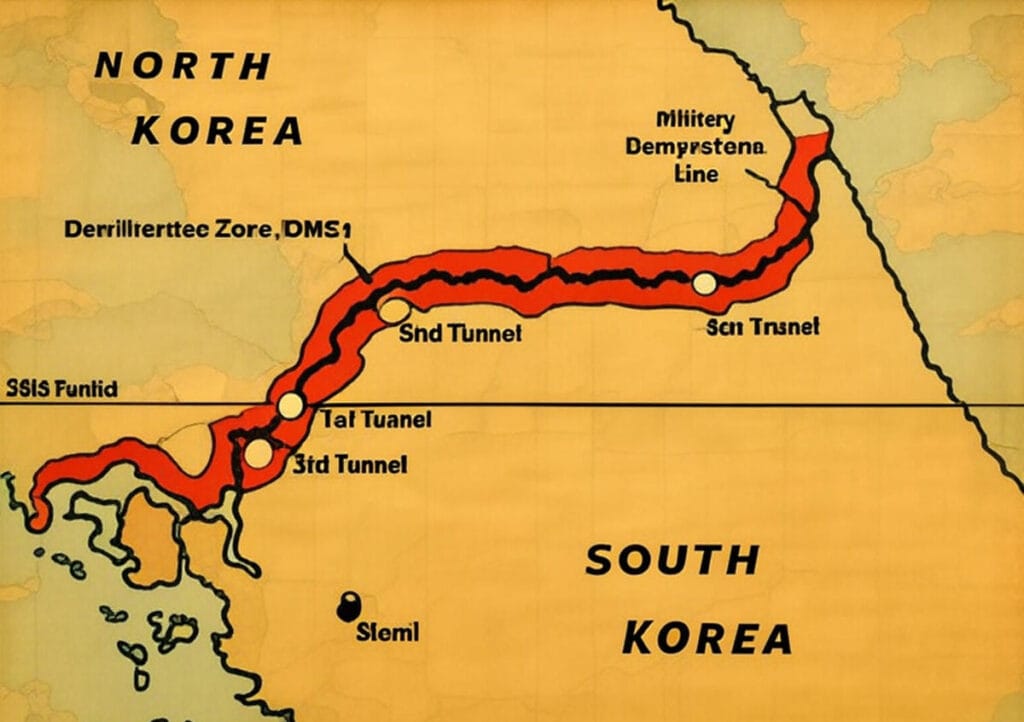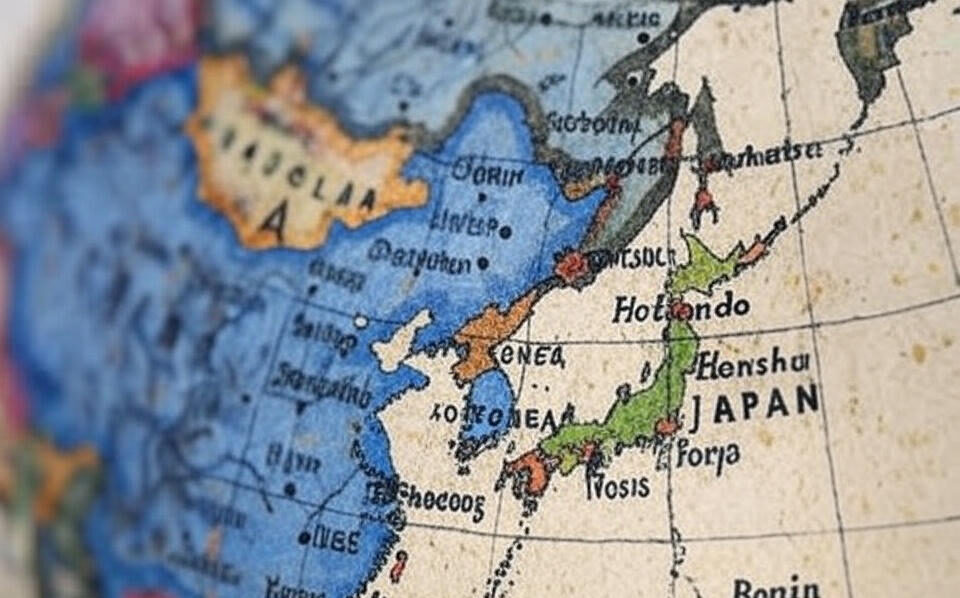
On August 19, 2025, a Korean border incident in the Demilitarized Zone (DMZ) inflamed South Korea-North Korea conflict. South Korean troops fired warning shots at North Korean soldiers who strayed across the Military Demarcation Line, igniting Pyongyang’s outrage and amplifying concerns about instability under the lingering 1950-53 Korean War armistice.
Incident Breakdown
The Korean border incident erupted in the DMZ, a 4-kilometer-wide fortified strip separating the Korean Peninsula.
Incident Specifics
South Korea’s military disclosed that North Korean troops, working on border defenses, unintentionally crossed the MDL, prompting a rapid defensive action.
- Event Timing: Crossing happened at 3:00 p.m., August 19.
- South Korean Measures: Warning shots followed loudspeaker warnings.
North Korean Backlash

Pyongyang’s reaction to the South Korea-North Korea conflict intensified regional friction, framing the incident as hostile.
Official Rebuttal
On August 23, North Korea’s state media quoted Lieutenant General Ko Jong Chol, who condemned the Korean border incident as a calculated affront.
- Denunciation: Ko branded the shots a purposeful escalation.
- Retaliation Vow: Future disruptions would face consequences.
Historical Framework
The DMZ tensions reflect a legacy of South Korea-North Korea conflict rooted in decades of division.
Border Dynamics
The 248-kilometer DMZ, fortified with mines and guards, remains a hotspot for Korean border incidents.
- Past Breach: A similar incident sparked shots in April 2025.
- Diplomatic Rift: Kim Jong Un declared South Korea a foe in 2024.
Regional Influences
The Korean border incident aligned with military activities, deepening South Korea-North Korea conflict.
Military Maneuvers
South Korea-U.S. joint drills, seen as aggressive by Pyongyang, amplified DMZ tensions.
- Joint Operations: Drills launched August 18 for deterrence.
- Nuclear Strategy: Kim Jong Un bolsters nuclear capabilities.
Global Perspectives

The conflict between South Korea and North Korea is getting a lot of attention around the world, showing how fragile the situation on the Korean peninsula really is.
International Scrutiny
The United States and allies closely track DMZ tensions, advocating for diplomatic resolutions.
- U.S. Outreach: President Trump pursues nuclear dialogue.
- Regional Risks: The incident threatens broader unrest.
Future Trajectory
The situation along the Korean border shows that there are still serious risks, so it’s important to work on preventing things from getting worse.
- Diplomatic Impasse: North Korea dismisses Seoul’s peace initiatives.
- Border Hazards: Fortification work risks further clashes.
The border incident on August 19 showed how fragile the relationship between South Korea and North Korea really is. South Korea’s warning shots, a standard MDL defense tactic, prompted North Korea’s swift retreat, averting immediate conflict. Pyongyang’s state media accused Seoul of orchestrating a provocation, leveraging the incident to depict South Korea as belligerent, particularly amid South Korea-U.S. military drills launched on August 18. These exercises, intended to counter North Korean threats, provoke Kim Jong Un’s focus on nuclear expansion, heightening DMZ tensions.
South Korea’s President Lee Jae Myung, sworn in June 2025, has sought to defuse tensions by halting DMZ propaganda broadcasts and advocating for the 2018 inter-Korean pact’s revival. North Korea’s rebuff, paired with its 2024 designation of South Korea as an adversary and dismantling of cross-border connections, reflects a commitment to isolation. The DMZ, laden with fortifications, remains a volatile trigger point.
Globally, the United States, led by President Trump, seeks nuclear negotiations, but North Korea’s alignment with Russia complicates progress. Experts view Pyongyang’s accusations as a tactic to counter South Korea’s blend of outreach and defense. The incident, tied to North Korea’s border fortification efforts, signals potential for future errors. Persistent diplomacy is critical to ease South Korea-North Korea conflict and maintain stability, averting wider repercussions in this geopolitically sensitive region.
Sources: The Independent, Al Jazeera, The Hindu, Business Standard






Solid article! Thinking about bankroll management & game selection is key in tournaments. Seeing platforms like jiliki app download apk offer local payment options like GCash is smart for accessibility too. Good stuff!
That’s a solid point about adapting to local preferences! Seeing platforms like peryagame online casino prioritize Filipino players with easy GCash deposits & Tagalog support is smart. It’s all about the “Laro ng Puso” vibe, right? Makes gaming accessible & fun! 👍